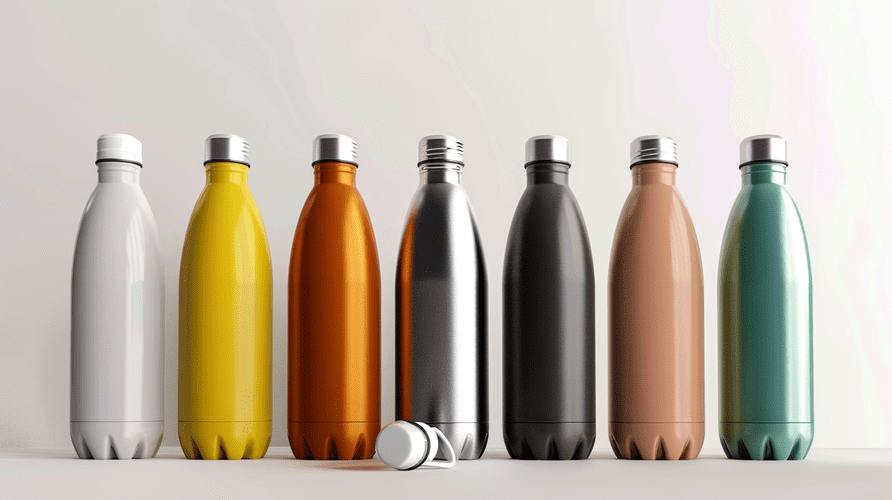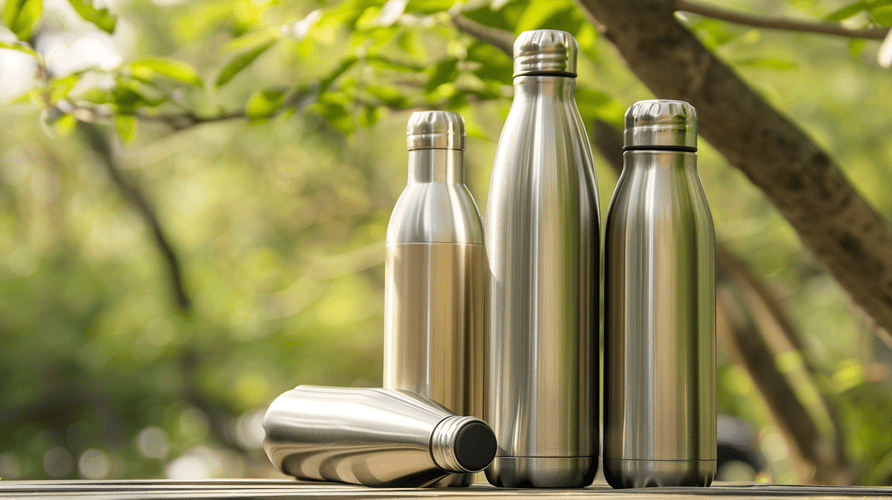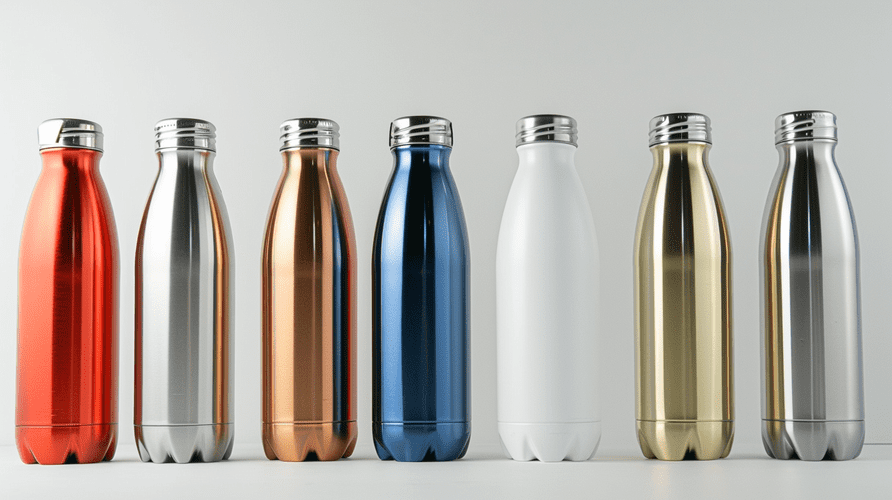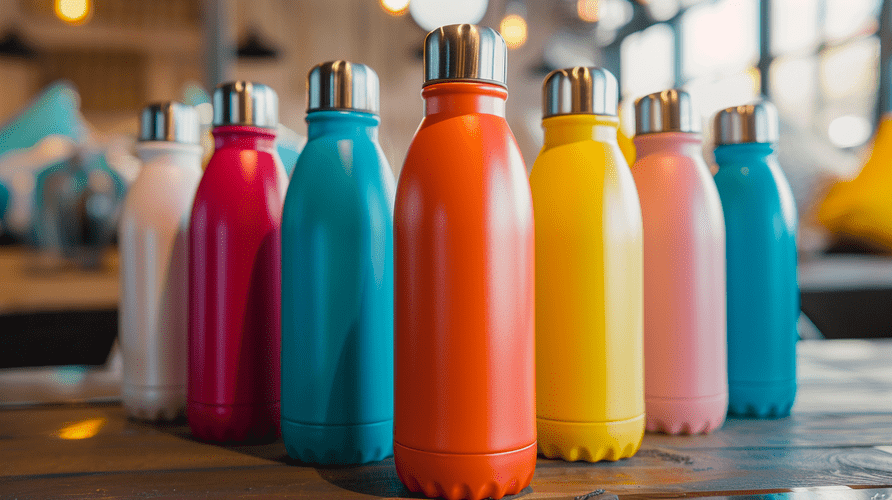Worried about the high initial cost of stainless steel bottles for bulk orders? Does this upfront expense make you hesitate, potentially missing out on a quality product? Understand the long-term value and see how they become truly cost-effective.
Yes, stainless steel water bottles are cost-effective for bulk buyers. Their durability, longevity, reusability, and premium perception offer significant long-term value and brand benefits that outweigh the initial investment compared to cheaper, less durable alternatives for businesses like yours.

Okay, I understand the initial price might seem high when you're looking at a large order. Many buyers like Mark in Canada ask me about this. So, let's first break down why these bottles have that price tag. Understanding the costs involved is the first step to seeing the real value.
Why are stainless steel water bottles so expensive?
Surprised by the price difference between stainless steel and plastic bottles? Does the higher cost make you question if they are worth it for your business needs? Let's look at the key factors driving the price of these bottles.
Stainless steel bottles cost more due to higher raw material expenses (like nickel and chromium), complex manufacturing processes (shaping, welding, vacuum insulation), stricter quality control, and the costs associated with customization like logos and specific colors requested by buyers.

Let's dive deeper into these cost factors. When you order from us at Icobottle, or any reputable manufacturer, the price reflects genuine value built into the product. It's not just an arbitrary number.
Raw Material Costs
The primary material, food-grade stainless steel (usually 18/8 or 304 grade), is significantly more expensive than plastic or aluminum. This steel contains chromium and nickel, which give it strength and resistance to rust. Market prices for these metals fluctuate, directly impacting the bottle cost. We have to buy large quantities of certified steel coils, which is a major upfront investment for us.
Manufacturing Complexity
Making a stainless steel bottle isn't simple. It involves multiple steps:
- Cutting and Shaping: Steel sheets are cut and formed into cylinders using processes like deep drawing.
- Welding: Tops and bottoms are precisely welded, often using lasers for clean seams.
- Insulation (for double-walled bottles): Creating a vacuum between the inner and outer walls requires specialized machinery and careful sealing to ensure long-lasting temperature retention.
- Finishing: Polishing, powder coating, or painting adds to the look and feel but also involves more steps and materials.
Each stage requires skilled labor and sophisticated machinery, adding to the overall production cost.
Quality Control and Customization
Buyers like Mark demand high quality and specific branding. This means rigorous quality checks at multiple production stages – checking for leaks, insulation effectiveness, material purity (we provide certifications), and cosmetic perfection. Customization, like applying a precise logo or matching a specific Pantone color, requires extra setup, materials, and careful execution, contributing to the per-unit cost, especially for complex designs.
| Cost Factor | Description | Impact on Price |
|---|---|---|
| Raw Materials | Higher cost of 18/8 Stainless Steel vs. Plastic | High |
| Manufacturing | Multi-step process, specialized machinery | High |
| Insulation | Vacuum creation for double-walled bottles | Medium |
| Quality Control | Inspections, testing, certifications | Medium |
| Customization | Logo application, custom colors, unique shapes | Medium |
| Labor & Energy | Skilled workers, energy for machinery | Medium |
Understanding these elements helps explain the price point. It reflects the investment in creating a durable, safe, and high-performing product tailored to your needs.
What are the advantages of stainless steel water bottles?
Looking for water bottles that last and reflect well on your brand? Tired of flimsy options that break easily or raise health concerns? Stainless steel offers many benefits beyond just holding water for your customers.
Key advantages include excellent durability, safety (BPA-free, no leaching), great temperature retention (keeping drinks hot or cold), environmental friendliness1 (reusable, recyclable), and a premium feel that enhances brand image when customized for resale or promotion.

Let's explore these advantages further. For a business owner like Mark, who resells bottles under his own brand, these benefits directly translate into customer satisfaction and repeat business.
Durability and Longevity
Stainless steel bottles are tough. They resist drops, dents, and scratches much better than plastic or glass. This means they last for years, reducing the need for replacements. For bulk buyers, this durability means a lower long-term cost per use and fewer customer complaints about product failure. A bottle that lasts reflects positively on the brand printed on it.
Health and Safety
Food-grade stainless steel (like the 304 grade we use) is non-toxic and BPA-free2. Unlike some plastics, it doesn't leach chemicals into drinks, even when exposed to heat or acidic beverages. This is a major selling point for health-conscious consumers and ensures compliance with safety regulations in markets like North America and Europe. This addresses a key concern for buyers needing reliable, certified products.
Temperature Insulation
Double-walled vacuum-insulated stainless steel bottles excel at maintaining temperatures. They can keep drinks cold for up to 24 hours or hot for up to 12 hours. This performance is a significant advantage over single-walled plastic or metal bottles, adding practical value for the end-user.
Sustainability
As consumers become more eco-conscious, reusable stainless steel bottles offer a clear advantage. They help reduce single-use plastic waste. Stainless steel is also highly recyclable at the end of its long life. Associating your brand with a sustainable product can improve public perception.
Brand Enhancement
A sturdy, sleek stainless steel bottle feels premium. Customizing it with a high-quality logo or design transforms it into a desirable branded item. This perceived value is much higher than that of a cheap plastic bottle, making it an effective promotional product or retail item that commands a better price point.
| Feature | Stainless Steel Benefit | Comparison vs. Plastic |
|---|---|---|
| Durability | High resistance to damage, long life | Prone to cracking, shorter lifespan |
| Safety | BPA-free, no chemical leaching | Potential BPA/chemical concerns |
| Temp. Control | Excellent (with double-wall) | Poor insulation |
| Sustainability | Reusable, recyclable, reduces waste | Often single-use, contributes to waste |
| Brand Image | Premium look and feel | Lower perceived value |
These advantages collectively justify the investment, especially for businesses focused on quality and brand reputation.
Why is stainless steel suitable for the manufacture of a water bottle?
Choosing the right material for your branded bottles is crucial. Worried about taste transfer, rust, or difficulty in cleaning with other materials? Stainless steel has inherent properties making it ideal for drinkware production.
Stainless steel, especially food-grade 18/8 (304)3, is perfect because it's non-reactive (doesn't affect taste), highly resistant to rust and corrosion, strong yet formable during manufacturing, non-porous, and easy to clean thoroughly. These are vital material characteristics.

Let's dive deeper into why these properties make stainless steel the preferred choice for high-quality water bottles. As a manufacturer, we rely on these characteristics to deliver products that meet the expectations of buyers like Mark.
Material Composition (Food Grade)
We primarily use Type 304 stainless steel, also known as 18/8 steel. This means it contains approximately 18% chromium and 8% nickel. Chromium forms a passive oxide layer on the surface, which provides excellent corrosion resistance4. Nickel enhances this resistance and adds durability. This specific composition is internationally recognized as safe for food and beverage contact. Using the right grade is critical – something Mark focuses on with certifications.
Non-Reactivity and Taste Neutrality
Stainless steel is non-porous and non-reactive. This means it won't absorb flavors or odors from previous drinks, and it won't impart a metallic taste to the water or beverage inside. After a simple wash, the bottle is ready for a different drink without any lingering taste, ensuring a fresh drinking experience every time.
Corrosion Resistance
Thanks to the chromium oxide layer, stainless steel resists rust and corrosion from water, acidic drinks (like juice or sports drinks), and cleaning agents. This ensures the bottle remains safe and hygienic over its long lifespan, maintaining its appearance and structural integrity.
Strength and Manufacturability
Stainless steel offers a great balance of strength and ductility. It's strong enough to withstand daily use and minor impacts, yet malleable enough for us to shape it into various bottle designs through processes like deep drawing and hydroforming. It can also be reliably welded to create leak-proof seals, essential for double-walled construction.
Hygiene
The smooth, non-porous surface of stainless steel makes it very easy to clean and sanitize. Bacteria have fewer places to hide compared to porous materials or scratched plastic. This ease of cleaning is vital for a reusable item that comes into direct contact with beverages.
| Property | Stainless Steel (304) Feature | Importance for Water Bottles |
|---|---|---|
| Composition | 18% Chromium, 8% Nickel | Ensures food safety, corrosion resistance |
| Reactivity | Low / Non-reactive | Prevents taste transfer, maintains beverage purity |
| Corrosion | High Resistance | Prevents rust, ensures longevity and hygiene |
| Strength | High Tensile Strength | Durability against drops and dents |
| Formability | Good Ductility | Allows for various shapes and manufacturing |
| Surface | Non-porous, Smooth | Easy to clean, hygienic |
These inherent material properties make stainless steel an outstanding choice for manufacturing water bottles that are safe, durable, functional, and maintain their quality over time.
Conclusion
So, while the initial cost is higher, stainless steel bottles offer bulk buyers like you true long-term value through durability, safety, performance, and brand image. They are a smart investment.
-
Discover the environmental benefits of stainless steel products and how they contribute to sustainability and waste reduction. ↩
-
Explore the health benefits of BPA-free products to understand why they are essential for consumer safety and well-being. ↩
-
Explore the advantages of food-grade 18/8 stainless steel, known for its safety and durability in drinkware manufacturing. ↩
-
Learn how corrosion resistance enhances the longevity and hygiene of stainless steel water bottles, making them a smart choice. ↩

